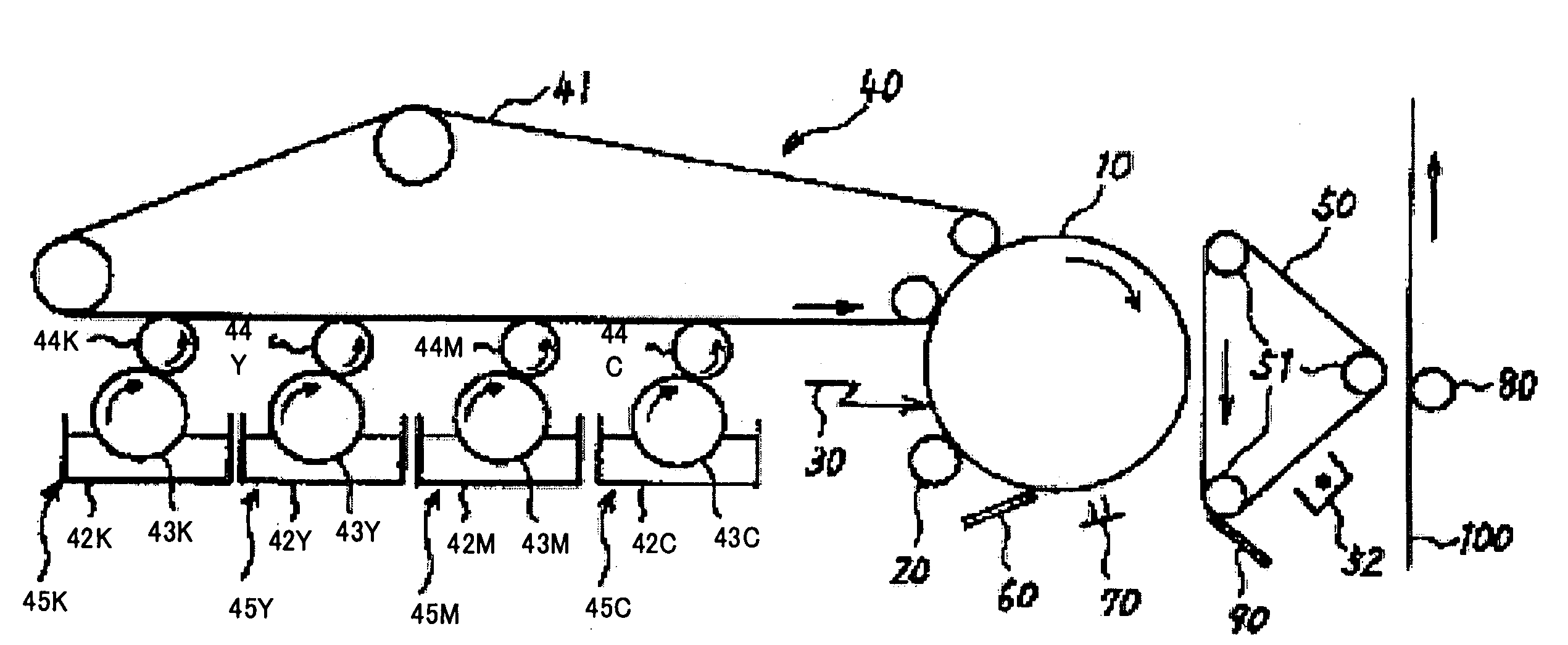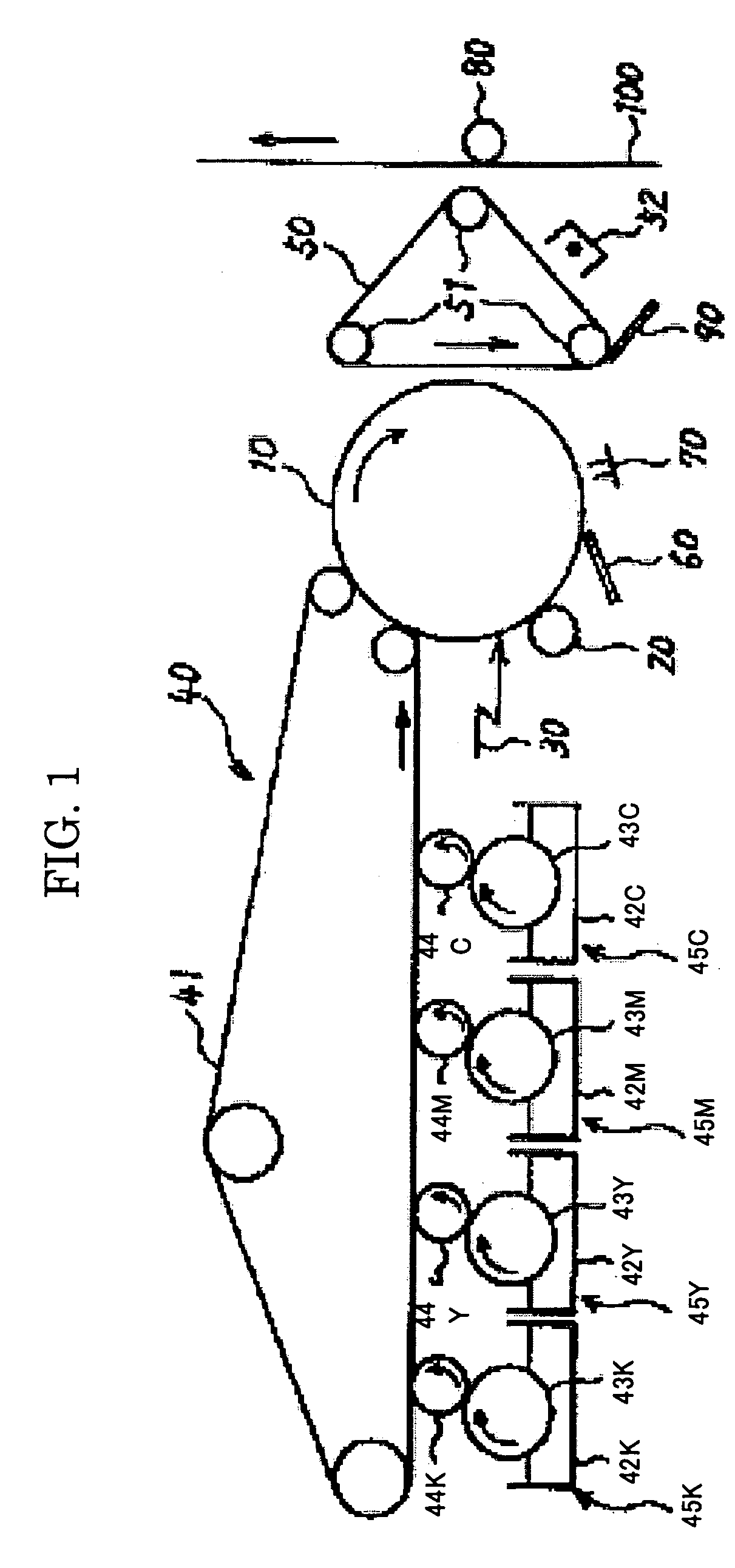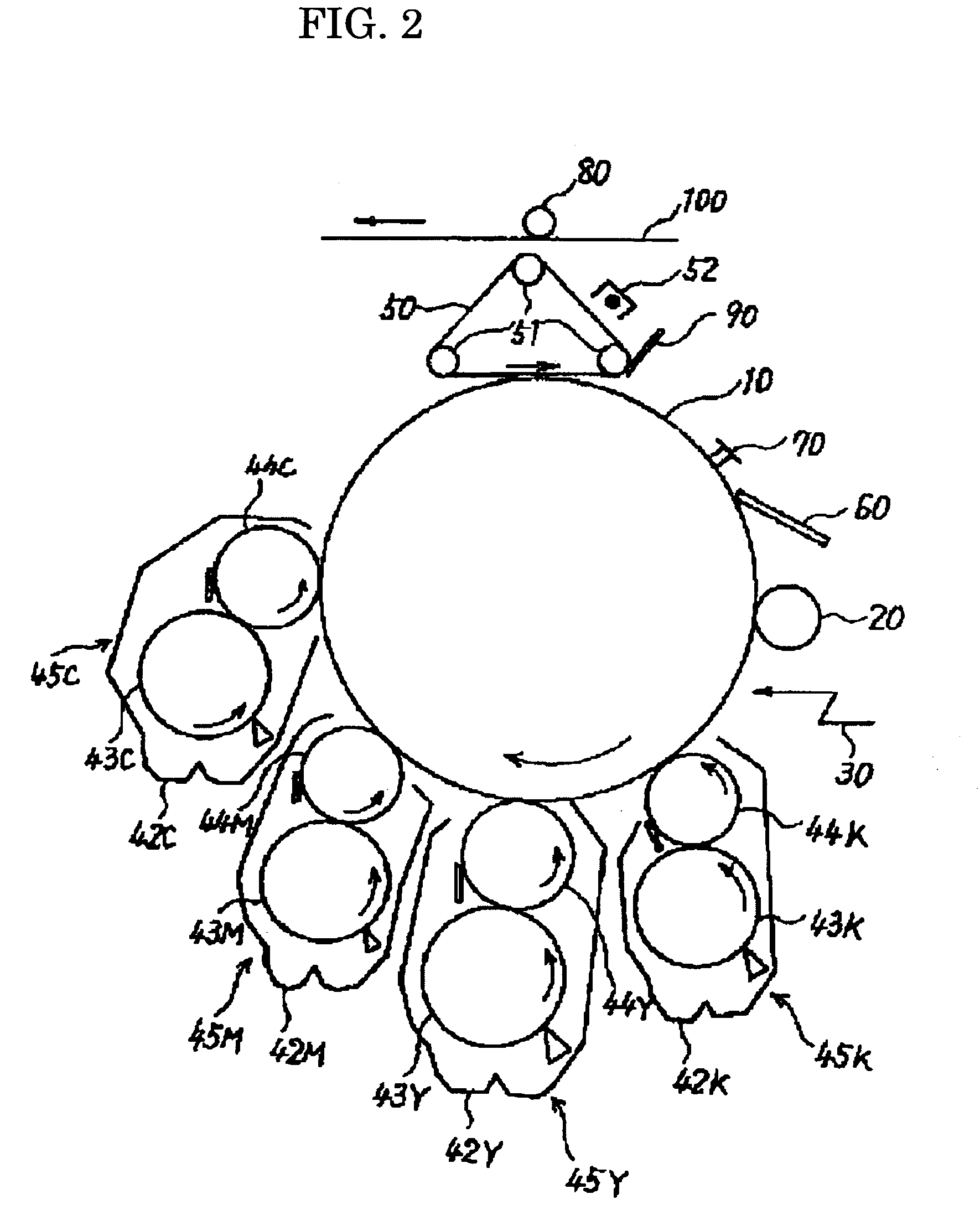Toner for developing electrostatic images, developer, image forming method, and image forming apparatus
a technology for developing electrostatic images and toner, applied in the direction of electrographic process equipment, instruments, developers, etc., can solve the problems of insufficient level of images obtained with a full-color copier, insufficient brittleness of fused and mixed composition, and limitations on the selection of materials for toner
- Summary
- Abstract
- Description
- Claims
- Application Information
AI Technical Summary
Benefits of technology
Problems solved by technology
Method used
Image
Examples
example 1
-Synthesis of Organic Fine Particle Emulsion-
production example 1
[0249]To a reaction vessel equipped with a stirrer and a thermometer, 683 parts of water, 11 parts of sodium salt of the sulfuric acid ester of methacrylic acid ethylene oxide adduct (ELEMINOL RS-30, manufactured by Sanyo Chemical Industries, Ltd.), 166 parts of methacrylic acid, 110 parts of butyl acrylate, and 1 part of ammonium persulphate were poured, and stirred at 3,800 rpm for 30 minutes to obtain a white emulsion. The white emulsion was heated, the temperature in the system was raised to 75° C., and the reaction was performed for 4 hours. Next, 30 parts of an aqueous solution of 1% ammonium persulphate was further added, and the reaction mixture was matured at 75° C. for 6 hours to obtain an aqueous dispersion liquid of a vinyl resin (copolymer of methacrylic acid-butyl acrylate-sodium salt of the sulfuric acid ester of methacrylic acid ethylene oxide adduct) [particulate emulsion 1]. The volume average particle diameter of the [particulate emulsion 1] measured by means of L...
production example 2
[0250]To 990 parts of water, 83 parts of [particulate emulsion 1], 37 parts of a 48.3% aqueous solution of sodium dodecyl diphenylether disulfonic acid (ELEMINOL MON-7, manufactured by Sanyo Chemical Industries, Ltd.) and 90 parts of ethyl acetate were mixed and stirred together to obtain a milky liquid. This was taken as [aqueous phase 1].
-Synthesis of Low-Molecular Polyester-
PUM
 Login to View More
Login to View More Abstract
Description
Claims
Application Information
 Login to View More
Login to View More - R&D
- Intellectual Property
- Life Sciences
- Materials
- Tech Scout
- Unparalleled Data Quality
- Higher Quality Content
- 60% Fewer Hallucinations
Browse by: Latest US Patents, China's latest patents, Technical Efficacy Thesaurus, Application Domain, Technology Topic, Popular Technical Reports.
© 2025 PatSnap. All rights reserved.Legal|Privacy policy|Modern Slavery Act Transparency Statement|Sitemap|About US| Contact US: help@patsnap.com



